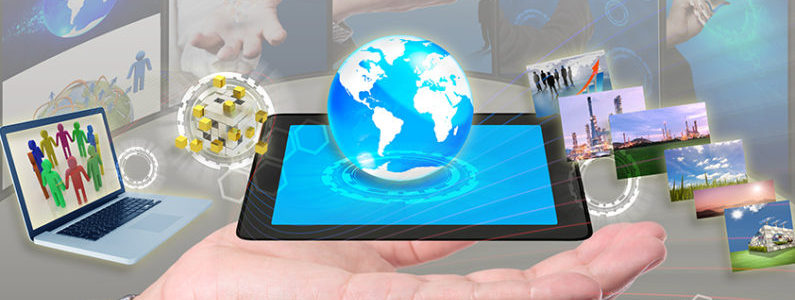What is Augmented Reality?
Augmented Reality (AR) is a view of the real world blended with computer-generated graphics. It is often supported by other sensory feedback relating to auditory, touch and olfactory senses. Think of your real world blending with digital, that’s what it ultimately means. The possibilities it unfolds are potentially limitless – from enhancing experience to aiding workplaces, changing lifestyle and outlook of the world. Fortunately, we are at the dawn of this technology and its use is currently limited to a few niches. Future generations are likely to have this as a freely available technology.
Possible Applications
AR is likely to disrupt the professional work environment in multiple ways. Textual content will be replaced by visual graphics to make workplaces more user-friendly and easier to adapt to.
Another possible application includes graphics simulations of real-world objects blended with the real world. This enables better visualization and understanding of the consequence one’s actions before actually performing it. Think of all the design and planning processes that could be aided by this. This also greatly enhances the productivity of technical discussions and saves manpower, resources, money and time. In fact, this is used in many smartphones and apps for an enhanced user experience.
Freedom from the screen? Yes, a possibility with AR. You will likely be able to open Microsoft office or Google applications or sketch pad out of mid-air without being glued to a screen. Yes AR can very much do that.
Current Status
AR has advanced from complex program syntax to graphical user interface (AR GUI), thereby making it easier to implement. This simpler user-machine communication ensures quicker programming and eliminates the need for specialists/programmers.
However, AR still remains in a nascent stage even though concepts and research have prototyped several applications e.g. creating human eye lens which when worn can blend graphics into the visible real world including AR billboards, traffic signs, path indicators and such. AR applications today only run on mobile and tablet screens which blend graphic content with a live video feed. To some degree, AR goggles are available with games and applications which give a better visual and, perhaps, auditory experience than viewing it on a screen.
AR is very computation-heavy, requiring real-time vision processing and blending with contextual graphics. As computational capability improves and miniaturizes, usage of AR will go up.
AR in Robotics
AR has the potential to significantly improve the user experience in robotics. Some of the common problems like understanding how controls work, training robots, and debugging problems become easier, saving time and demystifying robots. For the user, the ability to view pseudo motion of the robot before actually running the robot, making use of real-world geometries to instruct the robot, and help manuals for easy problem-solving, improves user experience and makes it very easy to integrate robots in a collaborative world.
Conclusion
AR brings a new level of user-friendliness to robotics. It saves money, time and manpower for robot operators, thereby enabling widespread use of robots on the shop floor and in day to day life. At Systemantics, we are constantly developing state of the art industrial robots embedded with the latest technologies to cater to the modern day shop floor. Our flagship products the ASYSTR 400 & ASYSTR 600 is primarily built to enable widespread automation.


